Artist Statement
“In my previous works, my continuous effort was focused on painting the time and the effect it leaves; painting walls was my way to achieving this.”, Majdal Al-Beik says.
I used to paint walls and the intervals and impacts caused by by time; such as the heat of the sun, the effect of the rain, writings set down in haste, children’s scribbles, funeral notices, quips of frustrated adolescence, and municipality postings. The wall served as a memory of the city and the neighborhood, a record for a particular phase.
Since the beginning of Arab revolutions and the continuous struggle in countries of the Arab spring between the people and the dictatorial regimes; a suffocating and painful general frame of mind has surfaced, especially in the countries that have witnessed a growing pace of killing and destruction.
I was influenced by this as many of my fellow artists in the region. An artist is the child of his environment and he witnesses the circumstances of his people by translating pain, fear, horror, and death. The Syrian revolution had a major impact on my paintings, finding myself to be under a reality that forced a tremendous change on my previous works, shifting them towards people’s catastrophes and suffering.
In my new works, I paint scarecrows that emerge from the heart of reality, representing sources of killing and destruction that have not been witnessed for decades. The continuous massacres, the barbaric and indiscriminate
killings have forced new and violent vocabularies onto my work, scarecrows, crosses, knives, traps, bullets, and various weapons. These vocabularies express the daily pain and tragedy afflicted cities suffer from, using various techniques and materials. A patched military cloth that brings fear and horror, holding a memory of pain and years of terror like a worn tattered military tent with no use of shelter or refuge but as one of the main sources of pain.
This cloth, or tent, that I stitch indicates the tearing of its body at times and blocking the immense terror emitted from it at other times. The blatant knifes and sharp blades foretell the verge of the abyss where the presence of knives overshadowed bodies with torture and gruesome spiteful murders. It is a crucifixion of the Syrian people on the lifeless body of human conscience.
My works are a scream in the face of hatred, fear, and killing, dismissive of them; an indicator of moral and humanitarian decay. As a result, my works came rough, filled with a tremendous amount of distress, sorrow, and combustion. And from drought and combustion comes a simple translation of Syria’s daily suffering.
Abdul Karim Majdal Al-Beik
‘Against the Wall’
compositions continue this line of investigation into the ensuing turmoil facing Syria.
In Syria, the Fires, alternating knife blades are set against burnt areas like lapping tongues of flame, directly referencing the violent conflicts engulfing his country like wild fire.
Abdul Karim Majdal Al-Beik’s past paintings portrayed the passage of time and his compositions revolved around the multitude of graffiti, etchings, marks and cracks of the walls of Damascus’s Old City. Originally employing a limited palette of white, black and grey, and employing the exact materials used in the construction of these ancient Damascene walls, Majdal Al-Beik’s exploration of this subject has evolved to incorporate a wider palette, the notable inclusion of additional elements such as small crosses and fabric strips, and divergent compositions derived of string, guns and knives.
While Majdal Al-Beik’s walls have always been vessels for memories, the memories that are now ingraining themselves into the ancient facades are of a different variety. With overwhelming themes of injury, pain, death, violence and destruction, Majdal Al-Beik’s paintings clearly portray a loss of naivety. The romantic notion of uncovering hidden secrets and stories in the walls is now secondary. The etched demonstrations of affection, quips of frustrated adolescence, names carved for posterity, funeral notices, municipality postings, and for rent signs have been replaced with socio-political commentary.
No longer passively subdued, Majdal Al-Beik’s canvases are emboldened with prominent red-soaked areas. Against the same walls where children once scrawled their names, men and women are now lined up and executed. With somber palettes of sepia, black, white and red, and featuring weapons and blank, nameless faces, Majdal Al-Beik’s new
Works such as Scarecrow and Pain reference death and injury, yet in each canvas symbols of perseverance are present. Small white cross forms lying in an explosion of black are reminiscent of the crosses left at the death site of a loved one. From behind the multitude of ‘scarecrows’, fabric rays radiate outward from a central golden orb, positioning these cross forms as apotropaic symbols, while in Pain, the sutures of the fractured wall pierce back together this wounded canvas.
Even with the present destruction and violence in his country, Abdul Karim Majdal Al-Beik paints a glimmer of hope for Syria and its people. In the top portion of the The Trap I, primitive faces reminiscent of scarabs are created with string. From each dangles a paper with sketched arrows and the words ‘security’, ‘stability’, ‘resistance’ and ‘confrontation’. Attached to the heads, the message is one of strength and determination. No matter whether these ambiguous faces are to be interpreted as those who have fallen or those who presently fight, they stand united.
New works by Syrian artist Abdul Karim Majdal Al-Beik
AgAinst the WAll

2012
Media on Canvas
x 180 cm
Pain
Mixed
180

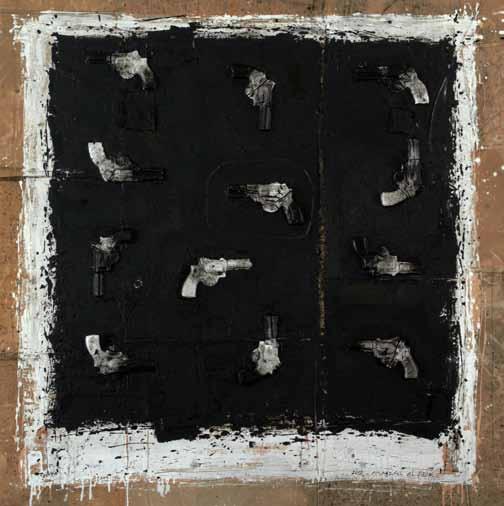
The Night 2012 Mixed Media on Canvas 150 x 150 cm
 The Trap I 2012
Mixed Media on Canvas
180 x 180 cm
The Trap I 2012
Mixed Media on Canvas
180 x 180 cm

2012
Media on Canvas
x 180 cm
Pain
Mixed
180
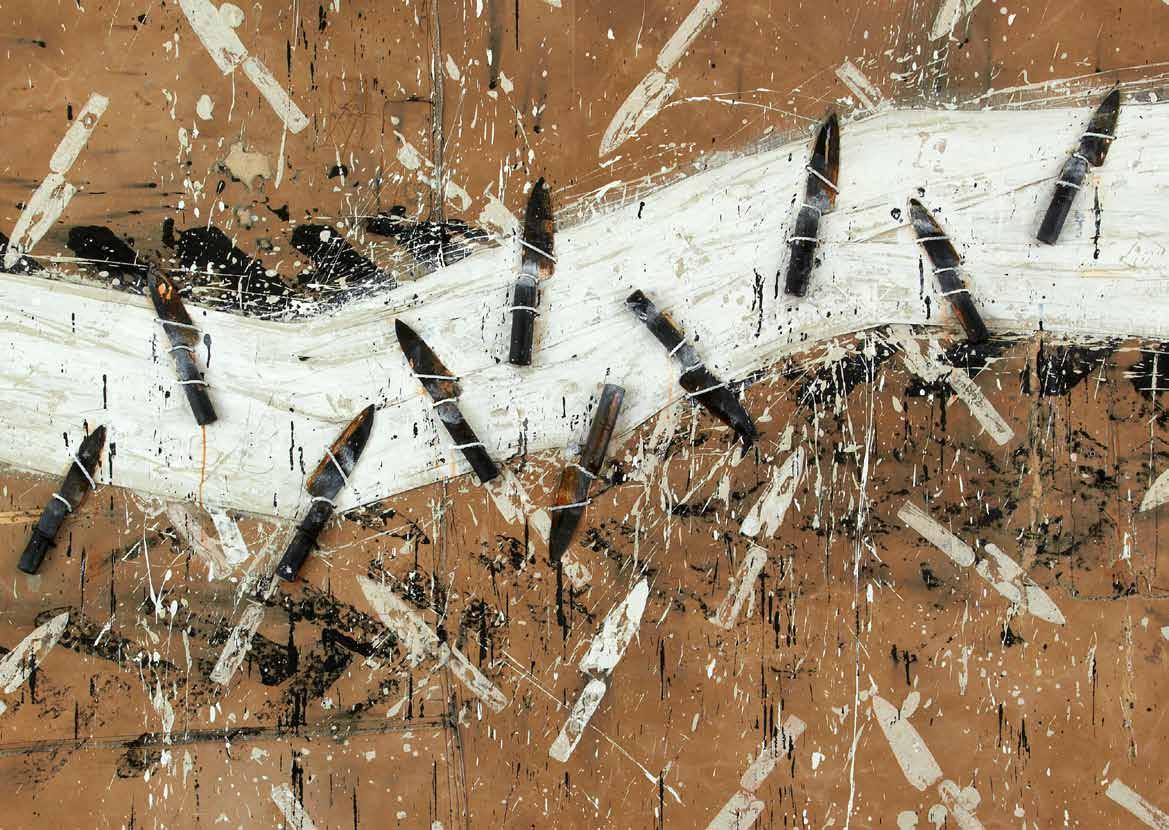
 The Trap II
2012
Mixed Media on Canvas
180 x 180 cm
The Trap II
2012
Mixed Media on Canvas
180 x 180 cm

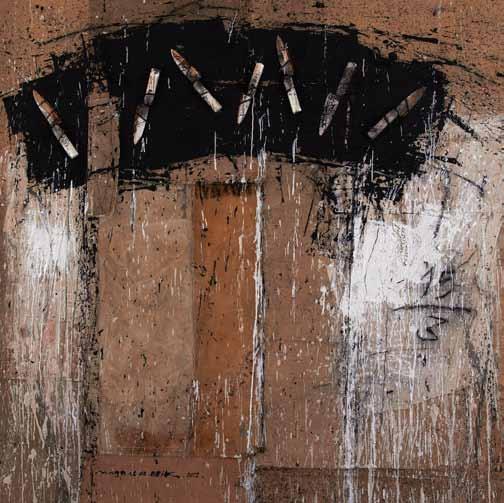
2012
Media on Canvas 180 x 180 cm
Pain
Mixed


150
Trace 2012 Mixed Media on Canvas
x 150 cm

Night & Day 2012 Mixed Media on Canvas 150 x 150 cm
Mixed Media on Canvas
150 x 150 cm
 Massacre 2012
Massacre 2012

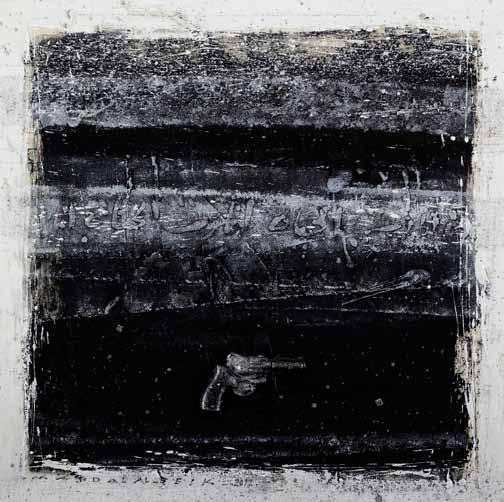
Death & Life 2012 Mixed Media on Canvas 100 x 100 cm



Syria, the Fires 2012
Media on Canvas 240 x 570 cm
Mixed

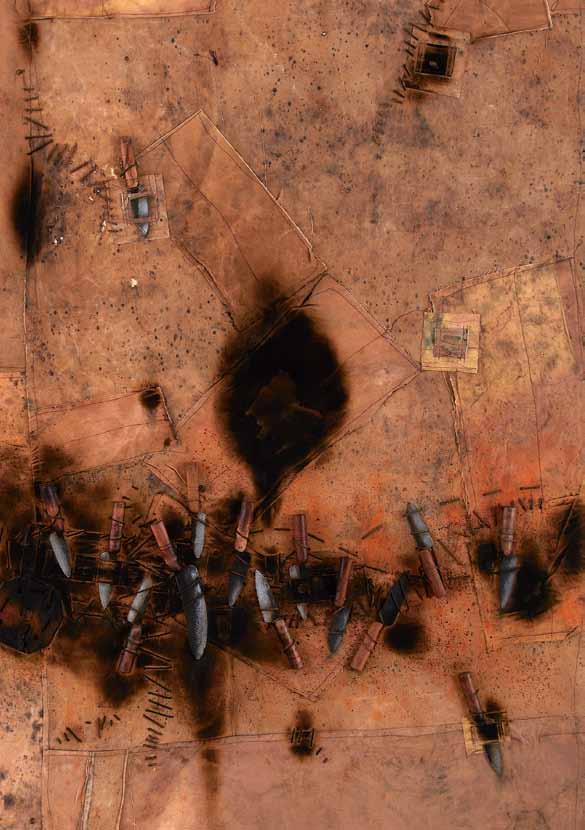
Ayyam Gallery
Founded by collectors and cousins Khaled and Hisham Samawi in Damascus in 2006, Ayyam Gallery sought to nurture Syria’s burgeoning and dynamic contemporary art scene through landmark non-profit initiatives such as the Shabab Ayyam Project, an incubator for emerging artists. Expansion into Beirut and Dubai enabled Ayyam Gallery to broaden its scope from the promotion of work by Syrian artists to those from the wider Middle East region. In doing so, Ayyam Gallery has established itself as one of the foremost exponents of Middle Eastern contemporary art to the international community.
Today, Ayyam Gallery is recognized as a leading cultural voice in the region, representing a roster of Arab and Iranian artists with an international profile and museum presence. A number of non-commercial exhibitions, as well as the launch of Ayyam Publishing, Ayyam Editions, and The Young Collectors Auction, have further succeeded in showcasing the work of Middle Eastern artists with the aim of educating a wider audience about the art of this significant region. Ayyam Gallery Damascus currently functions as a studio and creative haven for artists who remain in the wartorn city. In early 2013, Ayyam Gallery launched new spaces in London and Jeddah.
Ayyam Gallery, Dubai (DIFC)
Gate Village Building 3, DIFC, Dubai
United Arab Emirates, T: +971 4 4392395, F: +971 4 4392390
difc@ayyamgallery.com
Sunday to Thursday, 10 am to 8 pm
Saturday, 12 pm - 8 pm







 The Trap I 2012
Mixed Media on Canvas
180 x 180 cm
The Trap I 2012
Mixed Media on Canvas
180 x 180 cm


 The Trap II
2012
Mixed Media on Canvas
180 x 180 cm
The Trap II
2012
Mixed Media on Canvas
180 x 180 cm





 Massacre 2012
Massacre 2012







